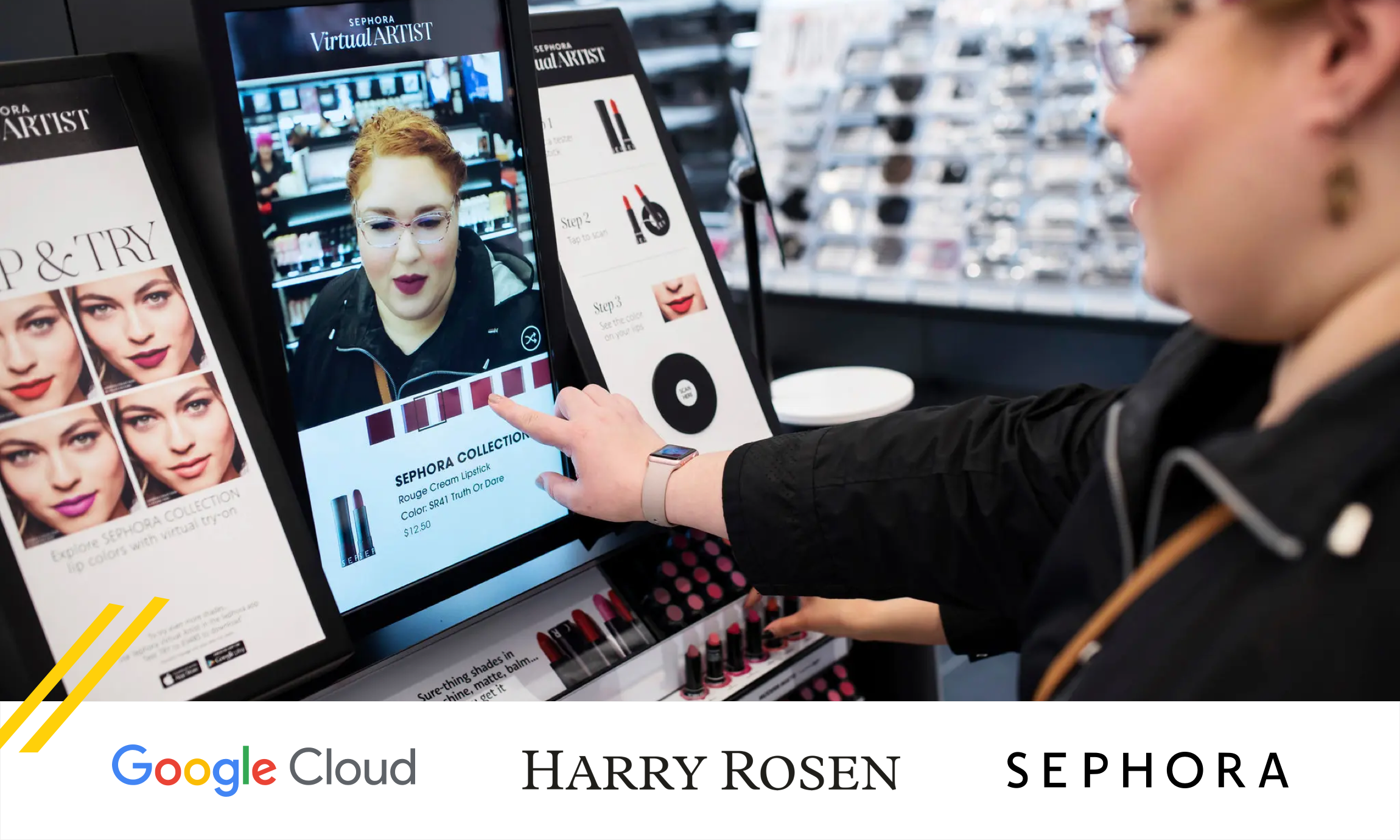At Modern Commerce Day 2022, Carrie Tharp, VP, Retail & Consumer at Google Cloud; Tovi Heilbronn, Director, Digital & Product Experience at Harry Rosen; and Sree Sreehararaj, CTO at Sephora joined moderators Margaret Rea, VP of Global Brand Marketing at commercetools and Dan Frommer, Founder and Editor in Chief at The New Consumer. These digital leaders came together to discuss how business leaders are using modern commerce technology to adapt to all the changes coming out hard and fast in the retail industry.

Insider insights from Carrie at Google Cloud
Even though retailers have been using the internet for years, they’re really just at the beginning to explore using technologies like AI (artificial intelligence) to shape customer experiences as they’re happening — not only online, but in physical stores as well. To use a baseball analogy, retailers are still in early innings, not even halfway through.
One way that businesses are starting to incorporate AI technologies into the core flow of business processes is using it as a way to improve the fundamental basics of retail. Retailers are doubling down, for example, on associate productivity in the field delivering excellent experiences — but supercharging those experiences using technology, such as using handheld devices as point of sales systems, primary sources of product information and more.
And make no mistake; digitizing physical stores has become imperative, not only to enhance the customer experience, but to gather data as well. After all, in this day and age, data is gold. Demographic and personal information gleaned directly from in-store shoppers can lead to marketing, pricing, planning and forecasting optimization, increasing conversion rates and driving up customer loyalty.
Insider insights from Tovi at Harry Rosen
When COVID-19 and the subsequent lockdowns hit, luxury menswear retailer Harry Rosen couldn’t afford to not invest in new technologies. As a brand known for their one-on-one experiences with advisors inside brick-and-mortar stores, it needed to deploy modern commerce technologies that replicated that intimate in-store experience.
What worked? Digitally enabling the advisors. But not in the way you may think. Video interactions would seem like the logical replacement for face-to-face advisor time, but clients didn’t go for it because most of their questions had to do with sizing. Instead, instant messaging became the go-to method of communication and was a hit with customers because it was time-saving and efficient.
And these digitally enabled advisors were not shelved once lockdowns were lifted and in-store shopping returned. Rather, these digital experiences have been incorporated into physical stores, with digital becoming the connective tissue between customers and retailers. Advisors have been empowered with the tools to digitally create and send out individually tailored, visually driven wish lists that clients can either bring with them to the store to purchase in-person, or can order remotely. This is the future of retail for Harry Rosen.
Insider insights from Sree at Sephora
The beauty industry has always been at the forefront at adopting new digital technologies, particularly virtual/augmented reality, allowing customers to try on various cosmetics shades directly on their faces using their devices’ built-in cameras. These experiences have been available to shoppers for many years, so many beauty brands already have the technical expertise to shift in new directions when needed.
When Sephora had to pivot quickly during the pandemic, it tested digital technologies that would mirror the face-to-face advice from beauty advisors that customers valued while shopping in the beauty brand’s physical stores. It was crucial for Sephora that customers still had access to the beauty advisors’ wealth of knowledge and personalized advice instead of going with bots that were just trying to sell something.
Like Harry Rosen, Sephora tried to recreate the in-store experience with their beauty advisors through video chat. And just like Harry Rosen, there were customer adoption issues. This was due to many people not wanting to open up their video function while talking to a beauty advisor. But interestingly, the brand saw an amazing amount adoption on chat, with plenty of conversions — in fact, conversions went up by up to 200% during the first few months of lockdown. Now that the world is in a post-pandemic stage, Sephora is focusing on providing a unified commerce experience that melds digital and physical experiences seamlessly.
What becomes apparent with the use cases of Harry Rosen and Sephora is to never assume anything. The key, rather, is having a foundation of modern commerce technologies that allow retailers to experiment, iterate and shift directions as quickly as needed, blending the in-store experience with the online and keeping the customer first. That way you can embrace, implement and benefit from the emerging technologies that bring real value to your customers.
To learn more about new trends in the retail industry and how modern commerce helps you to stay ahead of the curve, read our white paper Reimagining Retail Commerce in a New Normal World.